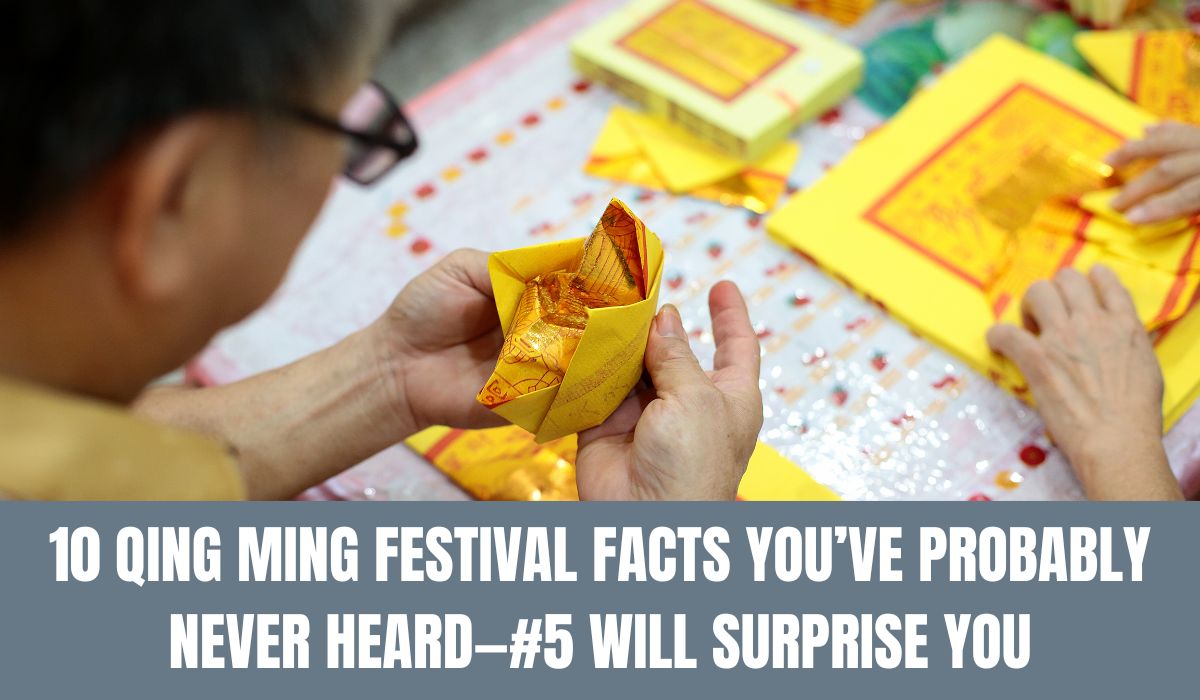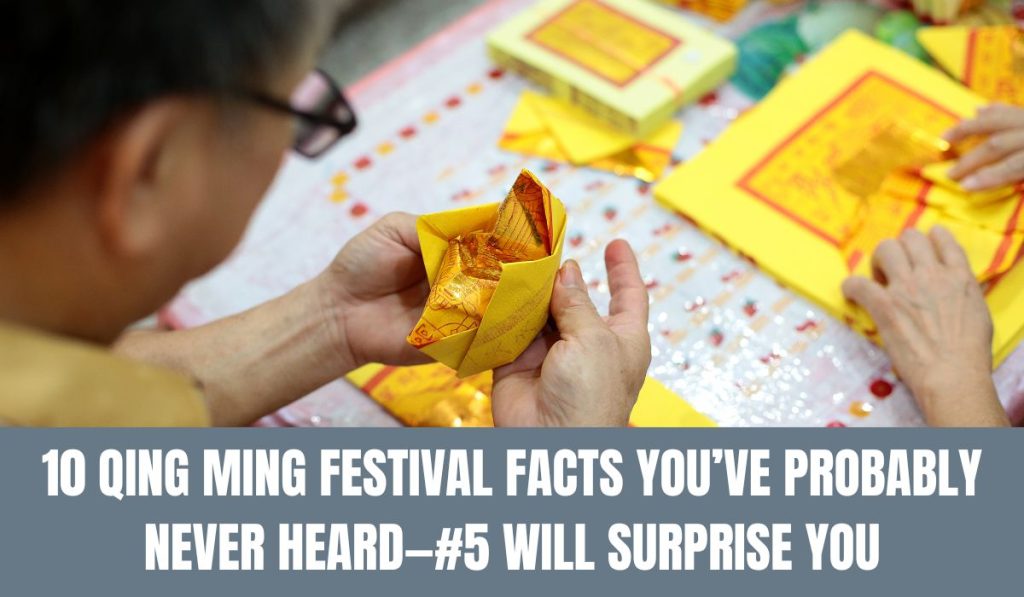10 Surprising Facts You Didn’t Know About Qing Ming Festival
-
Posted by
Hanim Nayan


Yesterday, we published the Ultimate Guide to Qing Ming Festival, covering everything from its origins to what to do (and not do) during this sacred time. If you haven’t read it yet, be sure to check it out here before diving into today’s post.
Today, we’re going beyond the basics to uncover hidden and fascinating Qing Ming facts that many people—even those who observe the festival every year—might not know. From political history to spiritual kite flying, and the role of flowers like chrysanthemums in honoring ancestors, here are 10 surprising things that make Qing Ming a truly rich and meaningful tradition.
As you plan your Qing Ming observances, remember that White On White is here to provide beautiful floral arrangements to help you honor your loved ones
The Role of Flowers in Qing Ming Festival: Honoring Ancestors with Chrysanthemums
During Qing Ming Festival, people do offer flowers as part of their rituals to honor and pay respects to their ancestors. While the most common offerings are food, incense, and paper offerings (such as paper money or clothing), flowers—particularly chrysanthemums—are often used in the ceremony.
Chrysanthemums are symbolic of longevity and are a common flower choice because they are associated with remembrance and respect for the deceased. In some regions, families will also place flowers at their ancestors’ tombstones or altars as part of the honoring process.
10 Qing Ming Facts You May Never Heard:
1. It Was Once a Fire-Free Festival
Qing Ming evolved from the older Cold Food Festival (寒食节 – Hánshí Jié), where fire was forbidden, and people could only eat cold meals. This was to honor Jie Zitui, a loyal servant who died in a fire set by his lord. Over time, Qing Ming merged with this festival, though most people today no longer observe the fire ban.
2. Qing Ming is a Solar Term in the Chinese Calendar
Qing Ming is not just a festival; it’s also one of the 24 solar terms (节气 – jiéqì) in the traditional Chinese calendar. It marks a seasonal shift: warmer temperatures, increased rainfall, and the beginning of spring farming. Farmers historically used Qing Ming as a guide for planting and harvesting
3. Burnt Offerings Go Beyond Spirit Money
During Qing Ming, families burn not only “hell money” but also paper replicas of modern luxury items: smartphones, condos, designer handbags, even yachts and passports! In Malaysia, you might see families burning paper versions of Touch ‘n Go cards, shopping vouchers, or luxury watches for their ancestors.
4. Kite Flying Has Spiritual Significance
Flying kites during Qing Ming isn’t just a spring pastime—it’s a spiritual ritual. In ancient China, people believed that kites could carry away illness and bad luck. Some would cut the kite string intentionally to let their troubles float away with the wind
5. The Festival Used to Last a Whole Month
In imperial China, Qing Ming customs extended over an entire month, particularly during the Tang and Song dynasties. Officials were granted leave to return home for the festival. Today, Qing Ming is officially a one-day observance, but many families still perform rituals up to two weeks before or after the official date.
6. Ancestral Worship Can Extend to Distant Generations
Qing Ming isn’t just for honoring parents and grandparents. Some families pay tribute to ancestors many generations back, sometimes even to clan founders. In Malaysia, large families often gather as a clan and conduct mass ceremonies in temples or columbariums.
7. Other Asian Cultures Have Qing Ming Variant
Qing Ming’s influence spread across Asia:
In Japan, the Obon Festival (in August) shares similar ancestor veneration.
In Vietnam, the Thanh Minh Festival is also marked by tomb cleaning and family gatherings. These reflect the shared Confucian values of filial piety and respect for the deceased.
8. Qing Ming Was Once Politically Charged
During China’s Cultural Revolution, Qing Ming was discouraged for being “superstitious.” But in 1976, people used the festival to mourn Premier Zhou Enlai in Tiananmen Square—sparking political protests. This moment is now seen as a turning point leading up to China’s reform era.
9. Home Altars Are a Common Substitute
Not everyone visits cemeteries during Qing Ming. For those whose ancestors are cremated or buried far away, it’s common to set up ancestral tablets or home altars. Offerings, incense, and prayers are made right at home—especially among Malaysian Chinese living in cities like Kuala Lumpur and Penang
10. Rituals May Include Calling Spirits Home
In Taoist and Buddhist practices, Qing Ming rituals can include guiding the spirits back home using chants, lanterns, and spirit-calling ceremonies. This is particularly important if the deceased passed away unexpectedly or far from home. These rites help the soul find peace and connection
Conclusion:
Qing Ming Festival is a rich blend of tradition, spirituality, and seasonal awareness. While many associate it only with grave visits, these lesser-known aspects reveal a deeply layered cultural practice that spans generations and geographies.
So next time you participate in Qing Ming, remember: you’re not just cleaning a grave—you’re taking part in a centuries-old tapestry of beliefs, symbols, and family connections.
Have you encountered any unique Qing Ming customs in your family? Share them with us in the comments below!
